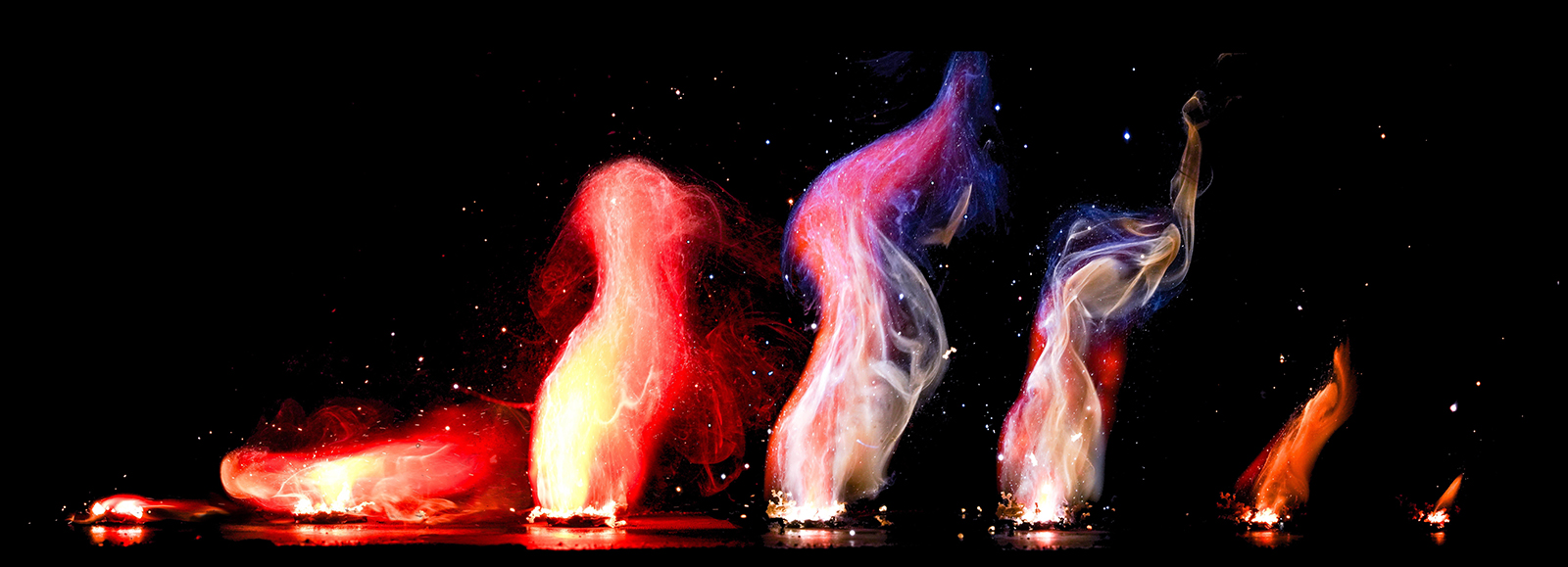Stay Up to Date
Submit your email address to receive the latest industry and Aerospace America news.
The Energetic Components and Systems Technical Committee provides a forum for the dissemination of information about propellant and explosive-based systems for applications ranging from aircraft to space vehicles.
In March at Purdue University’s Zucrow Labs in Indiana, students for the first time demonstrated a rocket propellant made from the same perchlorates found in Martian soil. No one had yet studied the feasibility of using Martian perchlorates as solid rocket propellant. The team used data from NASA’s Phoenix Mars Lander to determine that Mars soil contains a mix of 60% calcium perchlorate and 40% magnesium perchlorate and then created three samples of pure perchlorates as a control and a 60/40 blend referred to as the “Mars propellant.” They sealed the samples inside a windowed pressure vessel to precisely control the pressure inside and then measured the burn rate of the four propellants with a high-speed camera. They discovered that the 60/40 Mars blend was extremely hygroscopic, meaning it absorbed water from any exposure to the atmosphere. That’s a problem for earthbound propellants if exposed to the atmosphere, but in the arid environment of Mars, it may not be as significant a concern. Also, in contrast to the bright white flame produced by the aluminum and magnesium perchlorate and the bright red of the calcium propellant, the Mars blend created a red, white and blue flame. The students hope their findings help develop the means of manufacturing propellant in situ from Martian soil.
In September, researchers at Texas Tech University and the U.S. Naval Air Warfare Center Weapons Division revealed in an article published in the journal Propellants, Explosives, Pyrotechnics a new theory for metal particle combustion that could transform the way power is generated from solid fuels. The theory pinpointed three physical phenomena not previously considered and was derived from experiments performed from March to May. Three important processes controlling particle burning include internal particle boiling, radiant heat exchange resulting from nano-oxide formation during combustion, and suppressed heat transfer at the interface of the particle and surroundings. The new theory, semi-heterogeneous combustion, describes a mechanism for transitioning condensed phase into vapor phase reaction behavior. Designing new fuel particles that control these physical phenomena would allow engineers to harvest metal combustion energy faster and transform the ability to generate power from solid fuels. Faster burning metal fuels will benefit propulsion systems that require more thrust for the same payload.
In July, the Netherlands Organization for Applied Scientific Research, or TNO, won a European Space Agency contract to evaluate the Low Energy Exploding Foil Initiator detonator for launcher applications. The focus will be on replacing the standard pyrotechnic initiators of a rocket motor ignition system by a LEEFI. TNO is teaming with Diehl GmbH, which developed the LEEFI for defense applications. LEEFI does not make use of primary explosives and can only be fired by a distinctive current. LEEFI is an extremely fast-responding and reproducible initiator and removes the need for a mechanical safety device, subject to existing regulations, and may make the use of detonation cords obsolete on Arianespace’s Vega C and planned Vega E launchers. The exploratory study will run for a year, and if successful, further maturation of the technology is foreseen.
Contributors: Igor Altman, Alfons Mayer, Michelle Pantoya, Steve Son and Yvonne Thompson
Stay Up to Date
Submit your email address to receive the latest industry and Aerospace America news.




